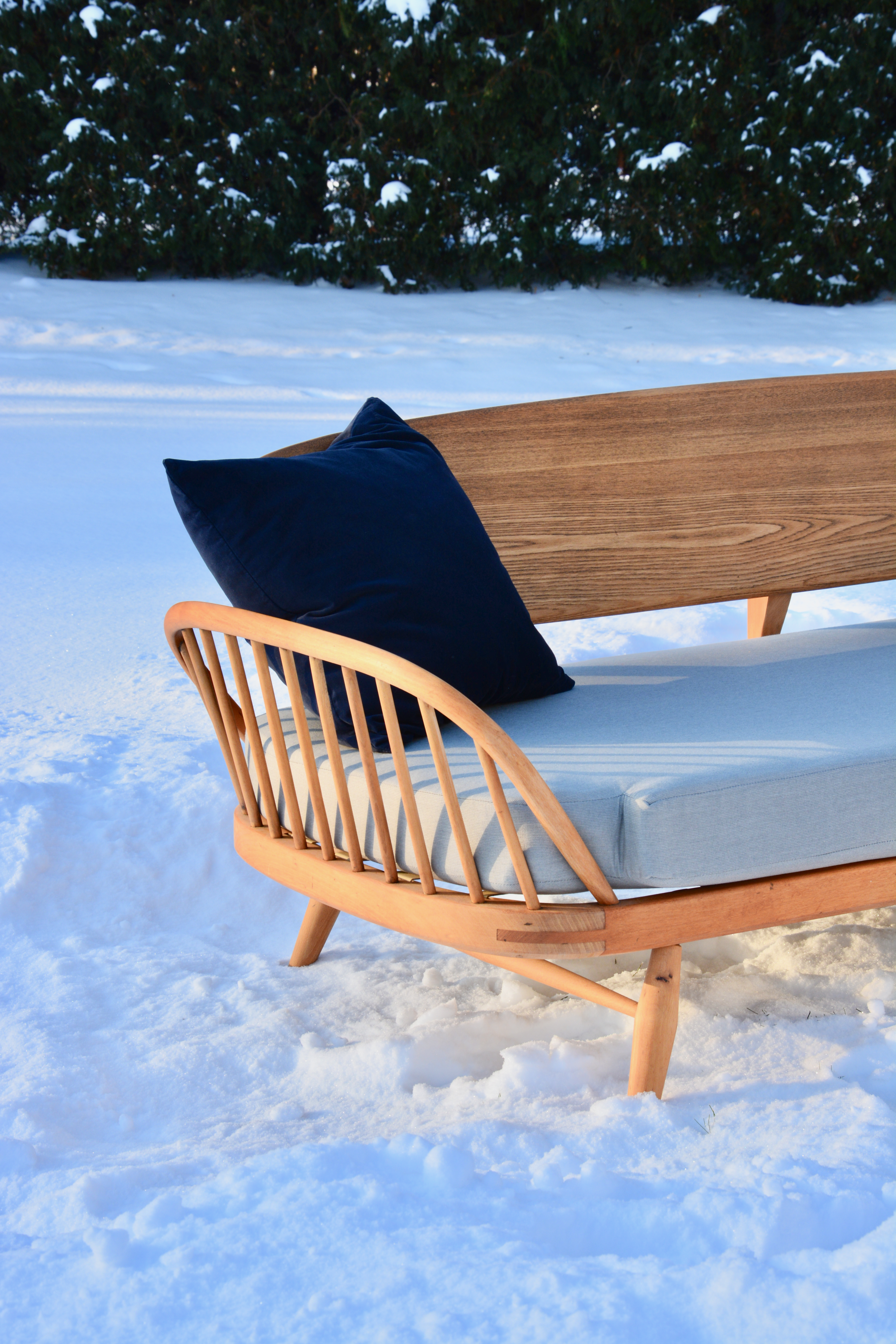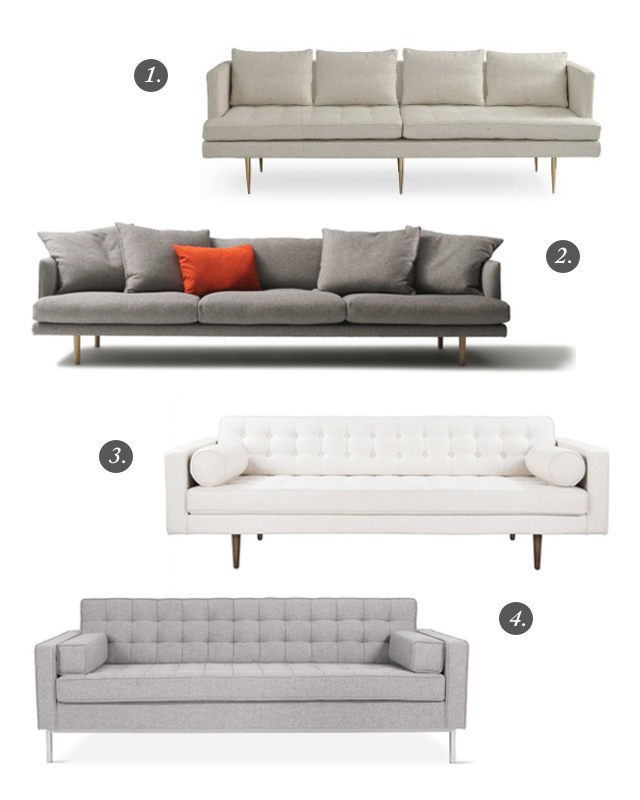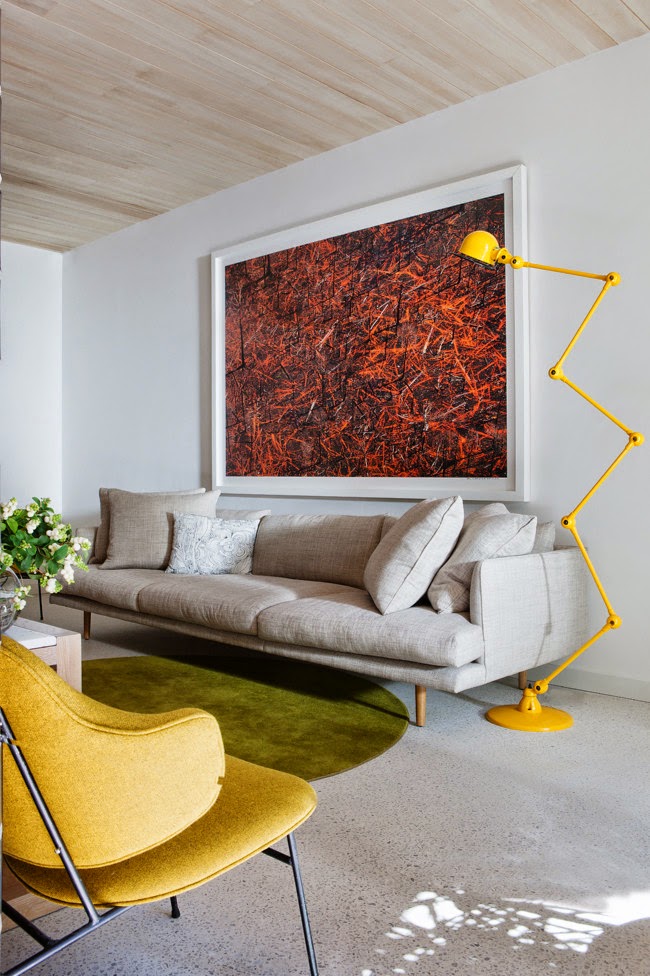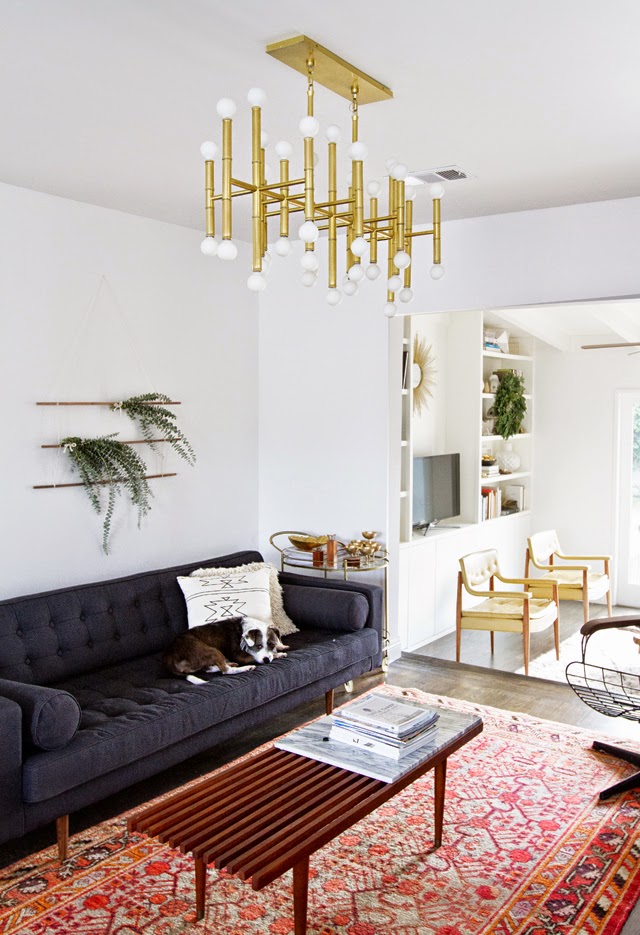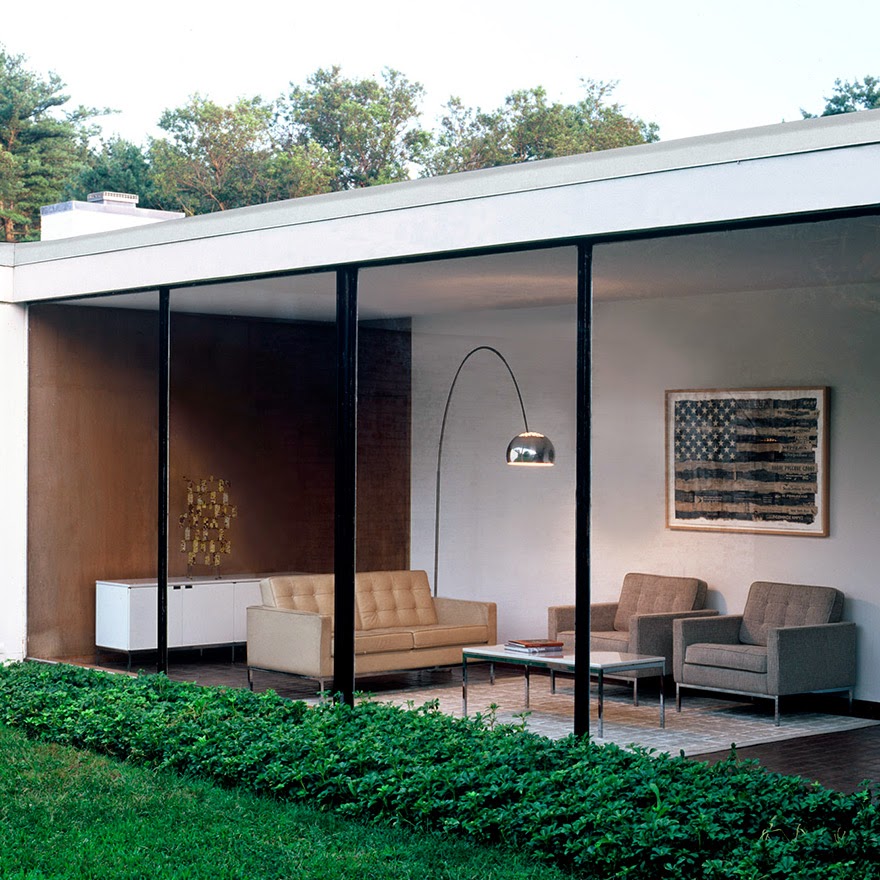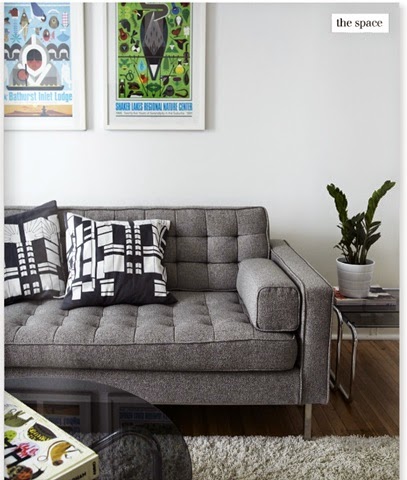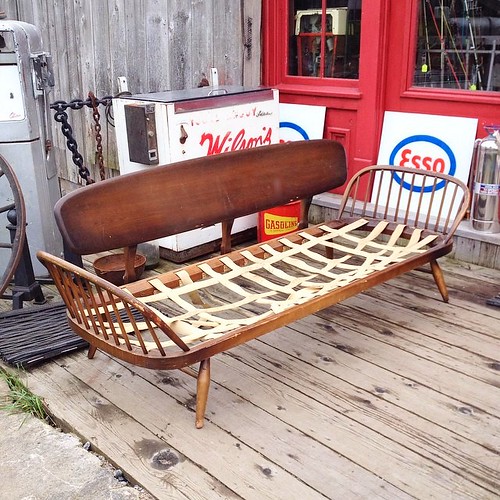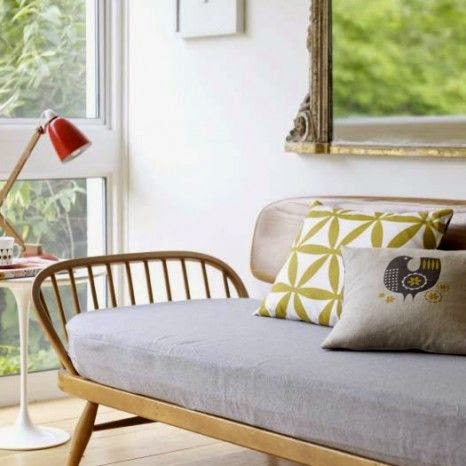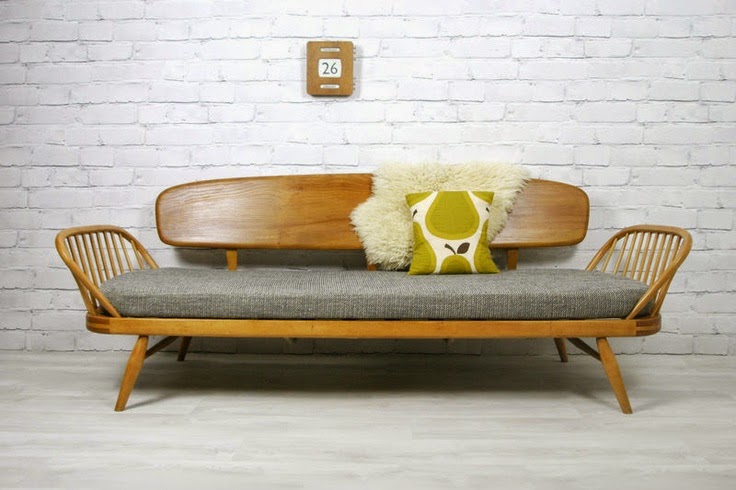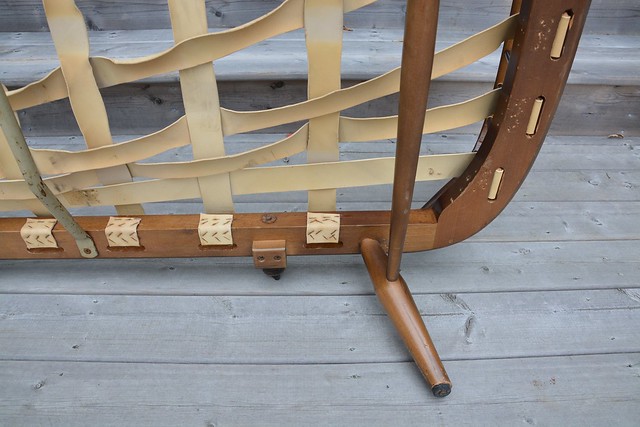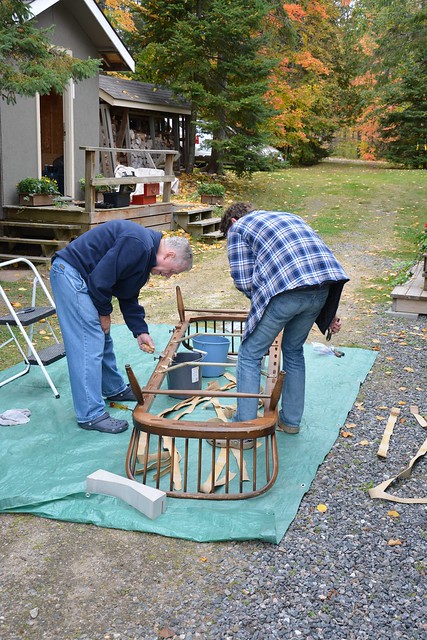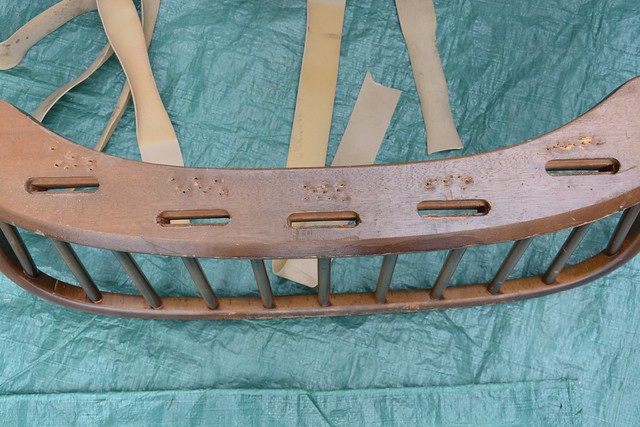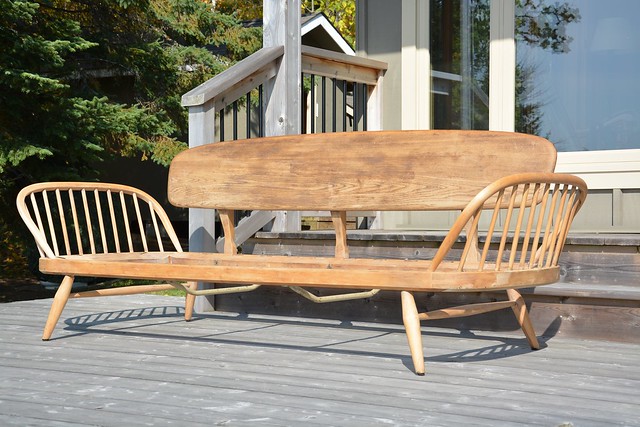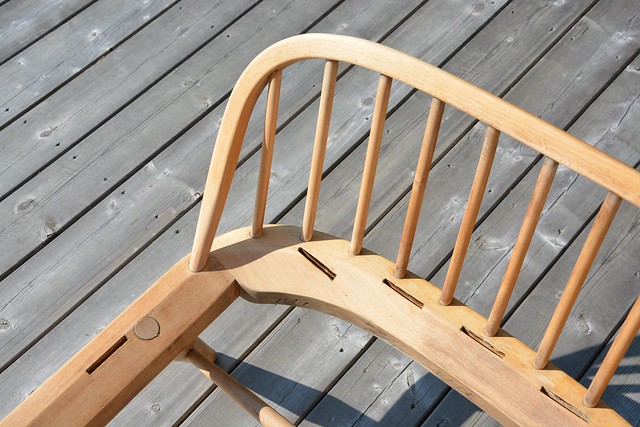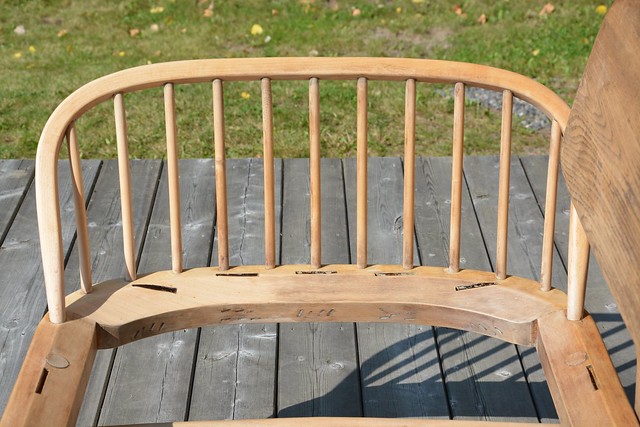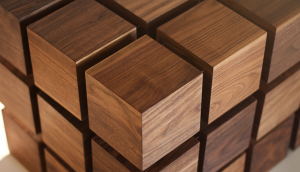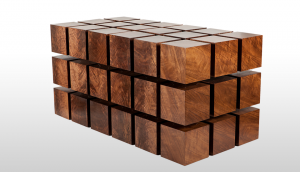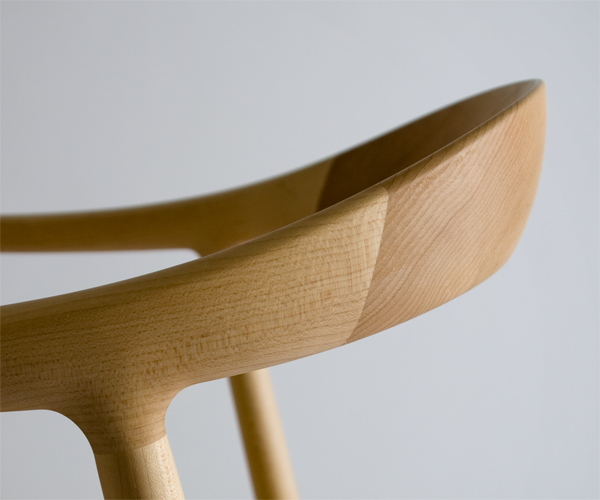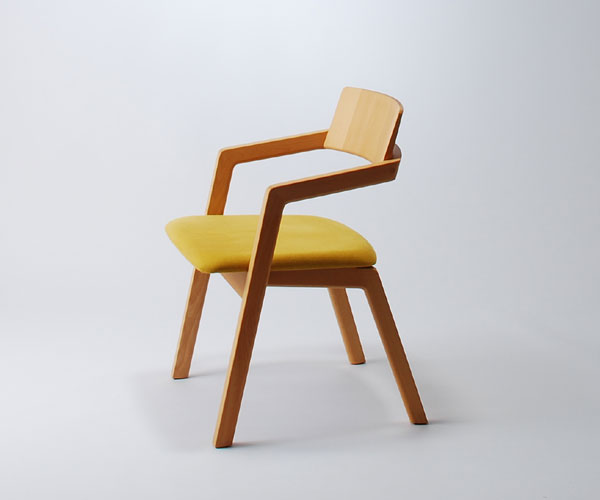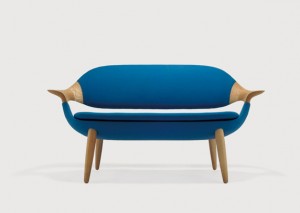This is a long post, friends. Please grab yourself a comfy seat and a cup of tea. We’ve got a furniture restoration project on our hands!
Just last week, my husband and I made our almost yearly trek up to visit family in Canada. This includes a stay in the wilderness known as cottage country in northern Ontario. I’ll post more about the cottage soon, but what you need to know is that one of my favourite non-nature-y activities while at the cottage is visiting antique stores and junk shops. Some of which are quite literally junk shops. Hello, Seguin Township dump store!
On one of these outings, my mother-in-law Sharon drove us to a favourite shop in Parry Sound, which includes a proper furniture store in addition to barns filled with all manner of antiques, knick-knacks, and old household wares. It’s probably the stuff of nightmares for a fire marshal.
In one of the barns, I spotted what I thought was a possibly mid-century style bed frame:
We asked the shop owner for a price ($100 CDN) and where it came from (England). Then we hauled it out, checked that it was sufficiently sturdy, and decided that it was a project we could not resist. It would be perfect as a daybed under one of the big picture windows overlooking the lake at my inlaws’ cottage. Lucky them!
Thanks to the wisdom of my Instagram friends, we learned that this is an Ercol sofa and indeed made in England. Specifically, it’s the Ercol Studio couch which was designed in the 1950s by the company’s founder, Lucian Ercolani.
Look how cute:
They’re still being produced and are rather pricey. I’m quite pleased that my eye for quality mid-century junk is in good working order!
So, back to our sofa:
We took the sofa back to the cottage with us where I gave it a rub-down with mild soap to see what sort of condition the finish was in.
The original stain is really neat. The darkened areas accent the back and the spindles of the arm rests. Sadly, it was badly damaged in a number of areas along the arms and back, so we decided to strip and refinish it completely. The plan is to achieve that nice and bright honey-toned look like the sofas above.
As an aside: I think I’m really bad at vacations.
After the cleaning, we removed the original webbing, which we learned is a very high-quality rubberized webbing made by Pirelli. (Sound familiar? They make tires.) Each strap was originally held in place with wooden dowels on either end.
In its previous life, someone had tightened up the webbing by cutting it shorter and stapling it on one side. We’ll try to get a whole new set of webs and dowels so it can be restored to its proper state.
Our main accomplishment was stripping off the finish. Pro tip: instead of using steel wool to remove the paint stripper, we used those green scrubber pads used for washing dishes. Their main attribute is that they’re super cheap, yet effective and gentle enough to not damage wood. The best part is that you can buy an armload and just toss them out as they fill up with gunk.
The stripper only went so far in the areas where the original finish was very dark, leaving some really dark stains. So I started to sand: 100-grit, followed by some ‘medium’ grit sponge, and finally 220-grit. I love the grain and the surf-board shape of the back rest, but it still needs a LOT of work.
Here are a few close-ups of where I sanded. You can see the contrast between the residual stain and the bare wood.
I sanded the first three spindles and half of the bottom frame (on the left) and the corresponding top of the arm rest. The wood is so nice and bright. The frame is solid beech and the back is a single board of elm.
And that’s as far as we got. I would have loved to have a few more weeks, even days, to work on it.
In the meantime, we’ll have to make do with looking at other Ercol sofas online, restored and styled in cute ways. Sharon and I are figuring out the webbing situation and what the seat cushion will look like, leaning toward something simple and in the neutral gray-to-greige spectrum. I can’t wait for this project to be finished.
Styled sofa photos via 1 | 2 | 3
All other photos by Karolina Buchner
